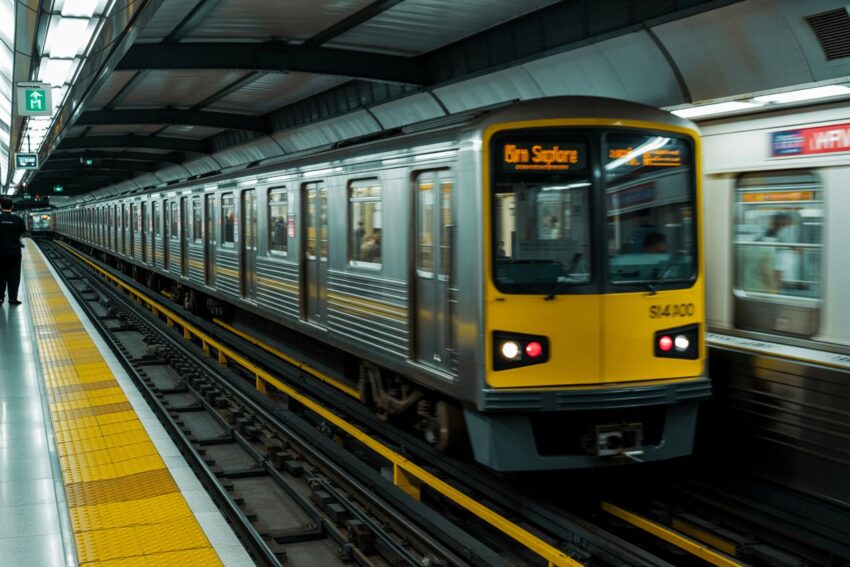Published on
November 19, 2025

In the latest rail news, Singapore’s MRT system is set to undergo extended and scheduled closures to allow for critical upgrades and maintenance work. This change is part of an effort to address the challenges faced by the aging infrastructure of the MRT network. With a growing population and increasing demands on public transport, the government has decided to implement longer shutdowns to ensure the network remains reliable and capable of serving commuters efficiently.
These changes will be particularly noticeable on the East-West Line, where a significant disruption is expected to occur starting in late November. These extended closures are essential for carrying out track work and vital system renewals that cannot be completed within the limited maintenance windows that currently exist.
Longer MRT Closures: A Necessary Step for Network Upgrades
Acting Transport Minister Jeffrey Siow addressed the need for longer scheduled MRT closures at the International Metro Operators’ Summit. He explained that the traditional approach of reducing operational hours with early closures or late station openings had become insufficient to meet the growing maintenance needs of the MRT network. As the system continues to age, more extended shutdowns are required to carry out comprehensive upgrades and repairs.
- The upcoming East-West Line disruption will take place between Bedok and Tampines stations, as well as between Tanah Merah and Expo stations from November 29 to December 8.
- These planned closures will provide rail operators with the necessary time to conduct essential track and system upgrades.
Siow emphasized that this shift in approach would create a more effective maintenance environment, helping to ensure the MRT system’s long-term reliability.
Addressing MRT Maintenance Challenges
Maintaining a complex network like Singapore’s MRT system is not without its challenges. Siow likened the system to a house, a car, and a computer all in one—while people may maintain older homes or cars, few would continue to use outdated technology like a 40-year-old computer. Similarly, Singapore’s MRT network requires constant upgrades and maintenance to keep it functioning effectively.
- One of the key issues faced by MRT operators is the limited time available for maintenance. Currently, maintenance work is only possible within a 3½-hour window each night. When factoring in the setup and removal of equipment, there is little time left for engineers to carry out more significant repairs or upgrades.
- Extended shutdowns will allow for more thorough and uninterrupted work, making it possible for engineers to tackle larger maintenance tasks and infrastructure upgrades that would not be feasible within the usual time frame.
This strategic shift to longer closures is expected to help improve public transport reliability, ensuring that the MRT system remains a dependable mode of transportation for commuters.
Technological and Workforce Challenges
In addition to the logistical issues surrounding maintenance, the MRT system also faces challenges related to outdated technology and a shortage of skilled workers. Siow pointed out that while the MRT was once state-of-the-art, the rapid advancement of technology has made many of its systems obsolete. Upgrading these legacy systems with modern technology, such as automation and condition monitoring, would greatly enhance reliability. However, retrofitting older systems with new technology is not always straightforward or cost-effective.
Another significant issue is the shortage of younger workers in the rail sector. With the median age of rail workers in Singapore above 40, there is an increasing difficulty in attracting younger engineers and technicians. The perception that rail work is dirty, dangerous, and difficult discourages many from pursuing careers in the field, leading to a lack of fresh talent entering the industry.
To address these challenges, Singapore is working on initiatives like the National Transport Academy to help recruit and train a new generation of skilled workers for the MRT sector. This workforce development is crucial for ensuring that the system can continue to grow and improve in the years to come.
Ensuring a Modernized MRT System for the Future
Despite the challenges, Singapore remains committed to ensuring the long-term sustainability and reliability of its MRT network. Siow emphasized that the government is taking a collaborative approach, working with rail operators, unions, and other stakeholders to improve the system. Through these efforts, Singapore aims to enhance its MRT system’s ability to meet the growing demands of commuters while addressing ongoing maintenance challenges.
- By embracing new technologies and recruiting a younger, skilled workforce, the government is preparing the MRT system for future growth.
- Longer scheduled MRT closures will allow operators to focus on more substantial upgrades and improvements without disrupting daily services as much.
In conclusion, the extended closures announced in the latest rail news are an essential part of Singapore’s broader strategy to upgrade and modernize the MRT system. While these disruptions may cause some inconvenience for commuters, the long-term benefits of a more reliable, efficient, and technologically advanced system will far outweigh the temporary inconveniences. Through these necessary changes, Singapore is preparing its MRT network to continue serving the needs of its citizens for many years to come.



